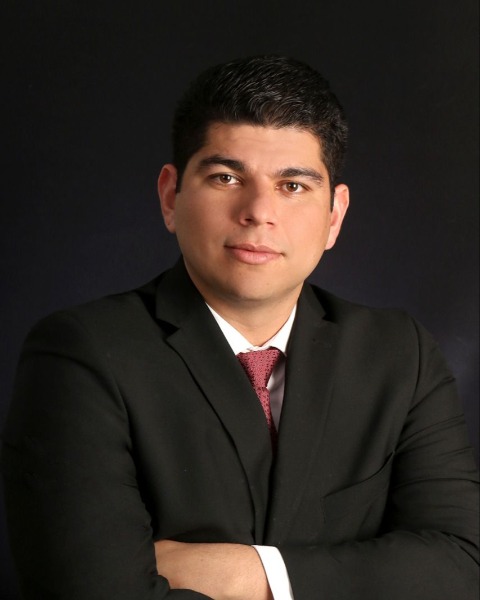Spine
Comparative Analysis of Complications Associated with Osteotomy Techniques in Adult Spinal Deformity

Diego T. Soto Rubio, MD
Spine Research Fellow
Department of Neurosurgery and Brain Repair, University of South Florida, Morsani College of Medicine, Tampa, Florida, USA.
Tampa, FL, US
Presenting Author(s)
Introduction: Osteotomies, such as pedicle subtraction (PSO), intradiscal osteotomy (IDO), Ponte osteotomy, and anterior column realignment (ACR), enable the correction of complex spinal deformities. Knowing about expected complications is essential for deciding on the most appropriate adult spinal deformity correction route.
Methods: Retrospective analysis, including ASD patients operated between 01/16 and 12/23, with fusions from upper instrumented vertebrae (UIV) at L2 or higher to pelvis (n=261), categorized by osteotomy type (ACR, PSO, IDO, or Ponte) and paired according to follow-up (FU): (> 3mo and < 2 years). Collected data included hardware failure (HF)—rod/screw fractures or loosening—neurologic deficits, and medical complications (DVT, PE, MI, pneumonia, pneumothorax, rhabdomyolysis, and UTI). Statistical analyses, including chi-square and ANOVA (95% CI), were performed using SPSS.
Results: Ultimately, 166 included patients. 125 (75.3%) required osteotomies: PSO (24), IDO (14), Ponte (72), and ACR (15). Mean age and BMI: 63.61±9.89 yo and 29.88±5.59 were similar between groups (p=0.51 and p=0.15). Mean FU: 385.05±148.40 (p=0.891).
The Ponte cohort presented the highest HF rate (40.3%), followed by ACR (37.6%), PSO (33.3%), and IDO (28.6%). PJK was more common in the Ponte group (9.7%) and PSO (8.3%), followed by IDO (7.1%) and ACR (6.7%). PJK developed after a similar time (335.9±292.62) (p=0.512).
Nonsurgical complications were most common in ACR (60%), followed by PSO (37.5%), Ponte (36.11%), and lastly, IDO (7.14%). Wound complications only presented in 5 Ponte (6.9%) and 1 PSO (4.16%) patient. Additionally, ACR presented 1 retrograde ejaculation, 1 arterial injury, and 1 pseudohernia; thigh numbness (37.8%), hip-flexor (37.8%), and quadriceps (29.7%) weakness were also documented.
Conclusion : Osteotomies, crucial for ASD correction, involve considerable risks. We documented higher rates of HF and nonsurgical complications in the Ponte and ACR groups, which also presented a greater diversity of neurological complications. This emphasizes the importance of careful technique selection tailored to each patient’s anatomy.
Methods: Retrospective analysis, including ASD patients operated between 01/16 and 12/23, with fusions from upper instrumented vertebrae (UIV) at L2 or higher to pelvis (n=261), categorized by osteotomy type (ACR, PSO, IDO, or Ponte) and paired according to follow-up (FU): (> 3mo and < 2 years). Collected data included hardware failure (HF)—rod/screw fractures or loosening—neurologic deficits, and medical complications (DVT, PE, MI, pneumonia, pneumothorax, rhabdomyolysis, and UTI). Statistical analyses, including chi-square and ANOVA (95% CI), were performed using SPSS.
Results: Ultimately, 166 included patients. 125 (75.3%) required osteotomies: PSO (24), IDO (14), Ponte (72), and ACR (15). Mean age and BMI: 63.61±9.89 yo and 29.88±5.59 were similar between groups (p=0.51 and p=0.15). Mean FU: 385.05±148.40 (p=0.891).
The Ponte cohort presented the highest HF rate (40.3%), followed by ACR (37.6%), PSO (33.3%), and IDO (28.6%). PJK was more common in the Ponte group (9.7%) and PSO (8.3%), followed by IDO (7.1%) and ACR (6.7%). PJK developed after a similar time (335.9±292.62) (p=0.512).
Nonsurgical complications were most common in ACR (60%), followed by PSO (37.5%), Ponte (36.11%), and lastly, IDO (7.14%). Wound complications only presented in 5 Ponte (6.9%) and 1 PSO (4.16%) patient. Additionally, ACR presented 1 retrograde ejaculation, 1 arterial injury, and 1 pseudohernia; thigh numbness (37.8%), hip-flexor (37.8%), and quadriceps (29.7%) weakness were also documented.
Conclusion : Osteotomies, crucial for ASD correction, involve considerable risks. We documented higher rates of HF and nonsurgical complications in the Ponte and ACR groups, which also presented a greater diversity of neurological complications. This emphasizes the importance of careful technique selection tailored to each patient’s anatomy.

.jpg)